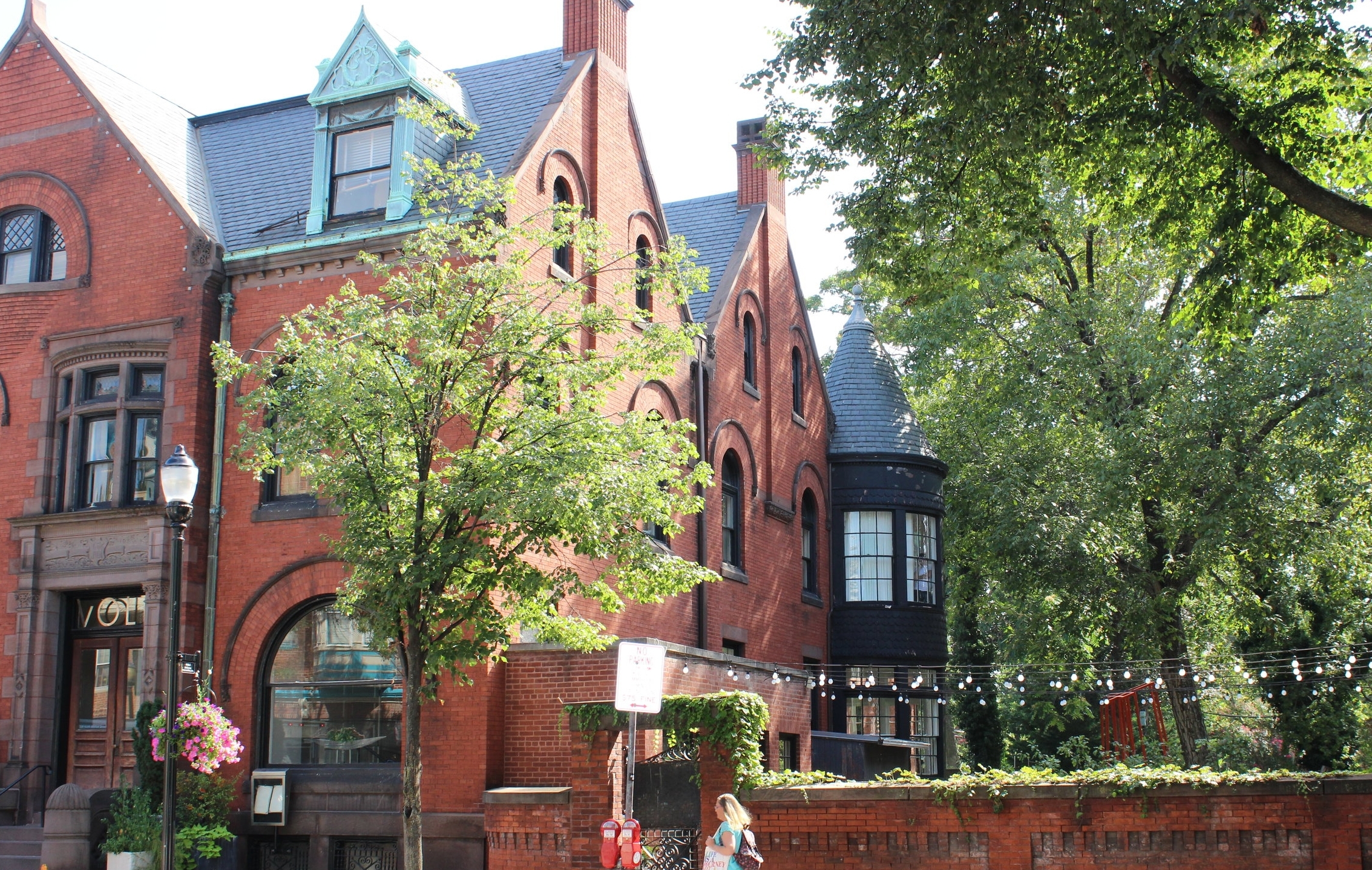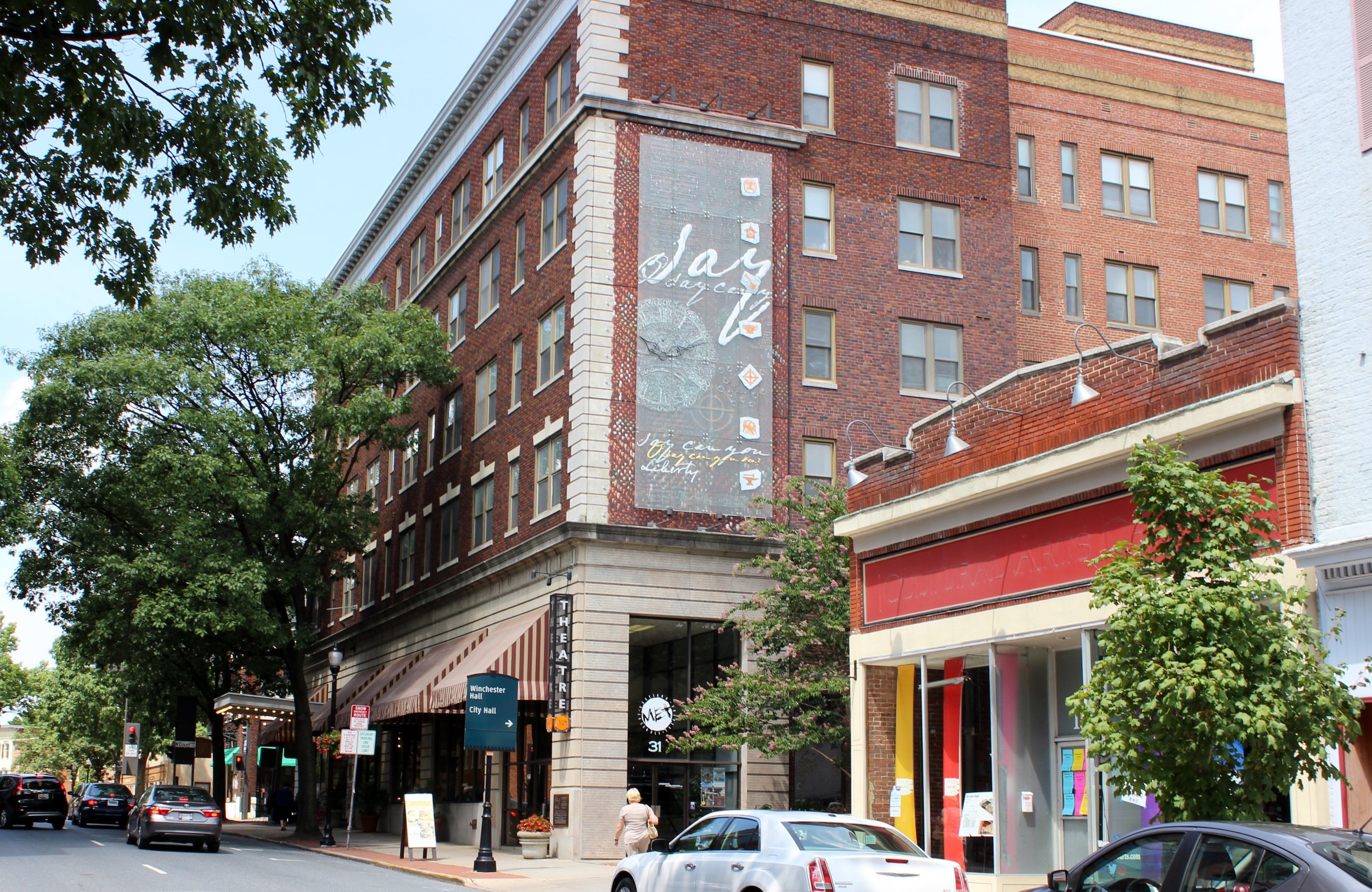A commitment to maintain Frederick's unique character runs deep within our community.
Frederick's establishment of a protected historic district - which dates back to the 1940's- is the most obvious, community-driven action taken to preserve the Downtown's classic ambiance. Within a carefully defined area of the City, the appointed Historic Preservation Commission formally upholds the standards placed upon exterior alterations to the buildings.
Michael Fitzgerald of Gideon Properties leading current renovations of the Pythian Castle
Interestingly, many Frederick investors and property owners, even outside this formal district, voluntarily choose to renovate existing buildings in a historically-aware manner. Everedy Square & Shab Row and the Monocacy Valley Cannery project are shining examples of significant, self-motivated investments focused on reverently returning buildings of the past to the modern economy.
Which leads us to ask:
Why is the Practice of rehabilitation and reuse so popular?
Despite the challenges and often higher costs, the successful re-imagining of an old building can strategically respond to a number of public and private needs.
From an economic perspective, these creative projects offer a host of benefits including...
1. Neighborhood Revitalization
Vacant properties are frequently viewed as visible indicators of a community's failing health. Lifeless sites - even those formerly of cultural significance - are closely associated with crime, disinvestment, and depopulation.
The introduction of private investment into a property can quickly reverse these undesirable symptoms. In a ripple effect throughout the neighborhood, surrounding property values and quality of life will rise-- attracting even more private investment. These infill improvements spark a higher concentration of culture and make for a more livable, walkable city.
Whether seeking educational opportunities, a moment of transcendental wonder, or simply an experience of distinctiveness, travelers are motivated to visit historic places. What's more, studies have shown that heritage tourists stay longer and spend more per day than other visitors.
As a result of Frederick's unique character, tourism consistently plays a major role in Frederick's economy - with spending by visitors to the county at over one million dollars per day.
Our visitors greatly appreciate that this is a thriving modern city anchored by an authentic historic downtown. Our preserved and adaptively reused historic buildings house unique shops and cutting edge cuisine, and even visitors without an interest in history really enjoy the authentic ambiance of the Frederick Town Historic District. Being able to shop, dine, attend a show or visit a distillery in an historic building is the perfect complement to their sightseeing and exploring.
Likewise, the money spent here by these visitors helps keep our downtown businesses healthy thus inspiring building owners to maintain these unique buildings.
- John Fiesler, Executive Director of VisitFrederick
3. Sustainability
Architect Carl Elefante once commented "the greenest building is the one that is already built." Despite a modern focus on constructing new, energy-certified buildings, the truest conservation of resources is the reuse of the existing. The repurposing of buildings avoids the material waste of demolition and the sprawl of new construction.
Interestingly, many older structures- designed before the reliance on modern HVAC systems- were originally designed to maximize natural energy efficiencies. Classic features - such as sun-blocking covered porches, working shutters, thick walls, and insulating attics & cellars, served real, practical purposes.
4. High-Quality Structures
Prior also to the modern era of disposable products, the workmanship and materials of older buildings were intended to last for generations. These legacy investments show through in carefully-crafted architectural details and the extensive use of brick and hardwoods.
Today, buildings are frequently designed based upon assumptions of a much shorter period of use. These more fleeting lifespans have made high-quality materials and time-consuming labor practices unsustainable and rarely utilized.
5. Attracting Workforce Talent
In today's ingenuity-driven economy, human capital has become an invaluable resource. With unemployment rates unusually low, companies are fiercely competing to attract the top talent.
The higher perceived quality of life driven by a cleverly planned office environment can provide a competitive advantage while recruiting workforce. Time and again, creative minds - that are so desirable to businesses - prove drawn to the authenticity, quirkiness, and convenience of restored and centrally-located historic buildings.
The actual renovation work of the project itself can also offer a unique opportunity for talent attraction. Restoration work frequently requires a higher skill set than new construction builds. As a result, adaptive reuse projects frequently offer higher paying jobs and bringing accomplished tradesman & architects to a community.
Motivated by the public benefits listed above, as well as a desire to safeguard cultural heritage, every level of government offers programs to offset a portion of the private costs of renovating and restoring historic properties. Property owners restoring historic buildings may be eligible for local property tax credits of 25% and state & federal income tax credits of 20%. Information on these programs is available here.
Additionally, each year the City of Frederick is awarded state funds that it makes available to citizens planning both exterior and interior improvements to existing buildings within the Downtown, Golden Mile, and East Frederick areas. Information on these match-based grants is available here.
*Special Thanks to: Carl Brown Collection, MD Room, FCPL
for use of the article's cover photo





